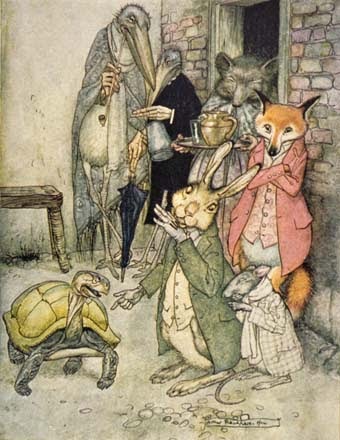LINK
http://fudosama.blogspot.jp/2014/08/shomudo-france.html
http://fudosama.blogspot.jp/2014/08/shomudo-france.html
:::::::::::::::::::::::::::::::::::::::::::::::::::::::::::::::::::::::::::::::::::::::::::::::::::::::::::::::::::::::::::
Shoomudoo An 聖無動庵 Shomudo-An
hermitage of the Precious Immovable Saint
The Shomudo hermitage was founded in 2005 in the Alps in France by the Venerable Kûban Jakkôin (Sylvain Guintard), as a place of ascetic practices, a place of worship and also a home from which to broadcast the teachings of the Shugendo in the West.

- quote
SHÔMUDÔ-AN - Hermitage of Unmovable Saints
(Fudo-Jimpen-Izuna)
The hermitage of the Precious Immovable Saint (Fudo Myoo) SHOMUDO-AN was founded following the long coma of Venerable Kuban, as a sign of thanks towards the Saint Founder of Shugendo (Enno Gyoja) and of various divinities of esoteric Buddhism. The hermitage is following the miscalenious Tradition of HONZAN-SHUGEN-SHÛ congregation, the shugen Path of the Original Mountain!
The head-quarter temple the Imperial temple SHOGOIN-MONZEKI in Kyoto.
The principal deities of the hermitage are: DAINICHI NYORAI (the Buddha Maha-Vairocana); Karasawa "Sho-no-Iwaya" FUDO MYOO (the Vidyaraja Acalanantha of the cave of the celestial flute); the divine avatar IZUNA DAIGONGEN, MIROKU BOSATSU (bodhisattva Maitreya); JIMPEN DAIBOSATSU (Enno Gyoja's posthume name); SHUGYO DAISHI (master of ascetic pratices, Enno gyoja during his ascetic periode at Mt Sanjo), Senju Kannon, Akiba Daigongen, Monju Bosatsu, Fugen Bosatsu, Kongosattva, Hachiman Daibosatsu and the great Tengu.
Three of its divinities are of the "Secret Buddhas" (hibutsu) of Japan: JIMPEN DAIBOSATSU (the great bodhisattva of metamorphic transformation) main Deity of the imperial temple Shogoin in Kyoto; SHUGYO DAISHI (the great master of asceticism) of the monastery of Mount Sanjo in the Mt Omine of Japan and the very secret IZUNA DAIGONGEN: the protective divinity prayed to by General Takeda Shingen (at the time of the feudal wars in Japan, 500 years ago) and also by the majority of the native ninjas of Mount Togakushi. Cental altar deity is MIROKU Bosatsu, Maitreya bodhisttava.
Japan July 2011 Shômudô hermitage Yamabushi
and Shogoin Monzeki temple staff for Sango/Tokudo Ceremony

(Nun Jôko, Gomonshu Miyagi Tainen, Abbot Nakamura, Venerable Kûban, Yamabushi Kenban, Yamabushi Kennin, Yamabushi Seigen, Yamabushi Kena, Yamabushi Kenkaku)
- Details are here -
- source : www.shugendo.fr/en/historical
:::::::::::::::::::::::::::::::::::::::::::::::::::::::::::::::::::::::::::::::::::::::::::::::::::::::::::::::::::::::::::

Shoogo-In 聖護院門跡
Shogo-In Monzeki - Imperial temple
15 Shogoin Nakamachi, Sakyo Ward, Kyoto
京都市左京区聖護院中町15番地
Founded 900 years ago.
Nearby is the forest 聖護院の森 Shogo-In no Mori, where a love-suicide took place in 1744.
井筒屋伝兵衛 23 years, courtesan お俊 20 years
Now also a topic for Kabuki.
お俊 -伝兵衛 - 1734年11月16日
天台の第5代座主、智證大師円珍 Enchin (814-91)が、 熊野那智の滝に一千日篭居をされた後、熊野より大峰修行を行われました。
その後大師の後を継ぎ、常光院の増誉大僧正が大峰修行を行われ、 修験僧として名をはせました。
- Homepage of the temple
- source : www.shogoin.or.jp

source : blogs.yahoo.co.jp/borog_602
- reference -
. 智證大師 Chisho Daishi Enchin Enchin 圓珍 - 円珍 .
(814 - 891)
a nephew of Kobo Daishi
:::::::::::::::::::::::::::::::::::::::::::::::::::::::::::::::::::::::::::::::::::::::::::::::::::::::::::::::::::::::::::

. - Join Fudo Myo-O on facebook - Fudō Myō-ō .
:::::::::::::::::::::::::::::::::::::::::::::::::::::::::::::::::::::::::::::::::::::::::::::::::::::::::::::::::::::::::::
. Pilgrimages to Fudo Temples 不動明王巡礼
Fudo Myo-O Junrei - Fudo Pilgrims .
[ . BACK to WORLDKIGO . TOP . ]
[ . BACK to DARUMA MUSEUM TOP . ]
:::::::::::::::::::::::::::::::::::::::::::::::::::::::::::::::::::::::::::::::::::::::::::::::::::::::::::::::::::::::::::
Shoomudoo An 聖無動庵 Shomudo-An
hermitage of the Precious Immovable Saint
The Shomudo hermitage was founded in 2005 in the Alps in France by the Venerable Kûban Jakkôin (Sylvain Guintard), as a place of ascetic practices, a place of worship and also a home from which to broadcast the teachings of the Shugendo in the West.

- quote
SHÔMUDÔ-AN - Hermitage of Unmovable Saints
(Fudo-Jimpen-Izuna)
The hermitage of the Precious Immovable Saint (Fudo Myoo) SHOMUDO-AN was founded following the long coma of Venerable Kuban, as a sign of thanks towards the Saint Founder of Shugendo (Enno Gyoja) and of various divinities of esoteric Buddhism. The hermitage is following the miscalenious Tradition of HONZAN-SHUGEN-SHÛ congregation, the shugen Path of the Original Mountain!
The head-quarter temple the Imperial temple SHOGOIN-MONZEKI in Kyoto.
The principal deities of the hermitage are: DAINICHI NYORAI (the Buddha Maha-Vairocana); Karasawa "Sho-no-Iwaya" FUDO MYOO (the Vidyaraja Acalanantha of the cave of the celestial flute); the divine avatar IZUNA DAIGONGEN, MIROKU BOSATSU (bodhisattva Maitreya); JIMPEN DAIBOSATSU (Enno Gyoja's posthume name); SHUGYO DAISHI (master of ascetic pratices, Enno gyoja during his ascetic periode at Mt Sanjo), Senju Kannon, Akiba Daigongen, Monju Bosatsu, Fugen Bosatsu, Kongosattva, Hachiman Daibosatsu and the great Tengu.
Three of its divinities are of the "Secret Buddhas" (hibutsu) of Japan: JIMPEN DAIBOSATSU (the great bodhisattva of metamorphic transformation) main Deity of the imperial temple Shogoin in Kyoto; SHUGYO DAISHI (the great master of asceticism) of the monastery of Mount Sanjo in the Mt Omine of Japan and the very secret IZUNA DAIGONGEN: the protective divinity prayed to by General Takeda Shingen (at the time of the feudal wars in Japan, 500 years ago) and also by the majority of the native ninjas of Mount Togakushi. Cental altar deity is MIROKU Bosatsu, Maitreya bodhisttava.
Japan July 2011 Shômudô hermitage Yamabushi
and Shogoin Monzeki temple staff for Sango/Tokudo Ceremony

(Nun Jôko, Gomonshu Miyagi Tainen, Abbot Nakamura, Venerable Kûban, Yamabushi Kenban, Yamabushi Kennin, Yamabushi Seigen, Yamabushi Kena, Yamabushi Kenkaku)
- Details are here -
- source : www.shugendo.fr/en/historical
:::::::::::::::::::::::::::::::::::::::::::::::::::::::::::::::::::::::::::::::::::::::::::::::::::::::::::::::::::::::::::

Shoogo-In 聖護院門跡
Shogo-In Monzeki - Imperial temple
15 Shogoin Nakamachi, Sakyo Ward, Kyoto
京都市左京区聖護院中町15番地
Founded 900 years ago.
Nearby is the forest 聖護院の森 Shogo-In no Mori, where a love-suicide took place in 1744.
井筒屋伝兵衛 23 years, courtesan お俊 20 years
Now also a topic for Kabuki.
お俊 -伝兵衛 - 1734年11月16日
天台の第5代座主、智證大師円珍 Enchin (814-91)が、 熊野那智の滝に一千日篭居をされた後、熊野より大峰修行を行われました。
その後大師の後を継ぎ、常光院の増誉大僧正が大峰修行を行われ、 修験僧として名をはせました。
- Homepage of the temple
- source : www.shogoin.or.jp

source : blogs.yahoo.co.jp/borog_602
- reference -
. 智證大師 Chisho Daishi Enchin Enchin 圓珍 - 円珍 .
(814 - 891)
a nephew of Kobo Daishi
:::::::::::::::::::::::::::::::::::::::::::::::::::::::::::::::::::::::::::::::::::::::::::::::::::::::::::::::::::::::::::

. - Join Fudo Myo-O on facebook - Fudō Myō-ō .
:::::::::::::::::::::::::::::::::::::::::::::::::::::::::::::::::::::::::::::::::::::::::::::::::::::::::::::::::::::::::::
. Pilgrimages to Fudo Temples 不動明王巡礼
Fudo Myo-O Junrei - Fudo Pilgrims .
[ . BACK to WORLDKIGO . TOP . ]
[ . BACK to DARUMA MUSEUM TOP . ]
:::::::::::::::::::::::::::::::::::::::::::::::::::::::::::::::::::::::::::::::::::::::::::::::::::::::::::::::::::::::::::














































